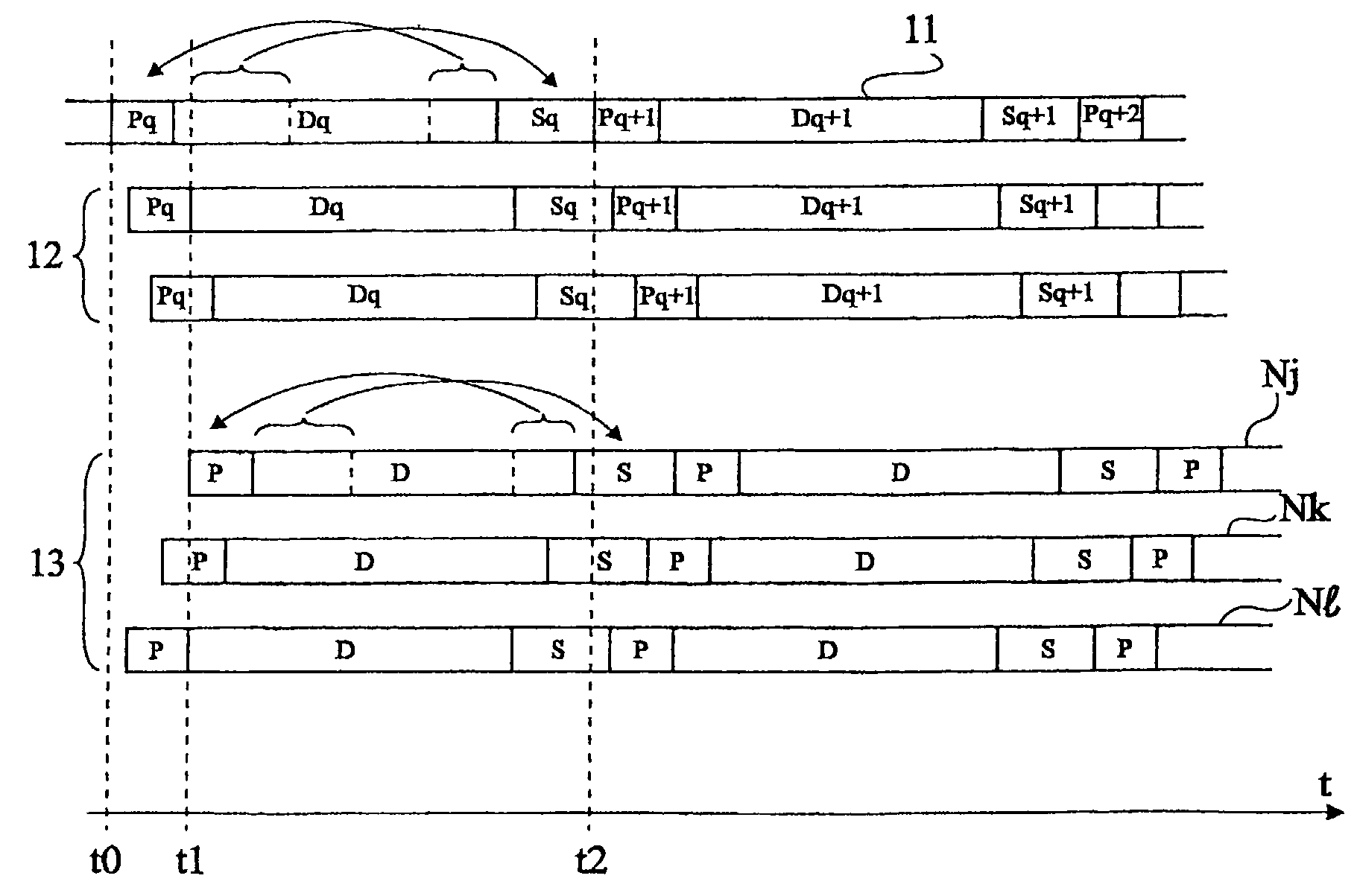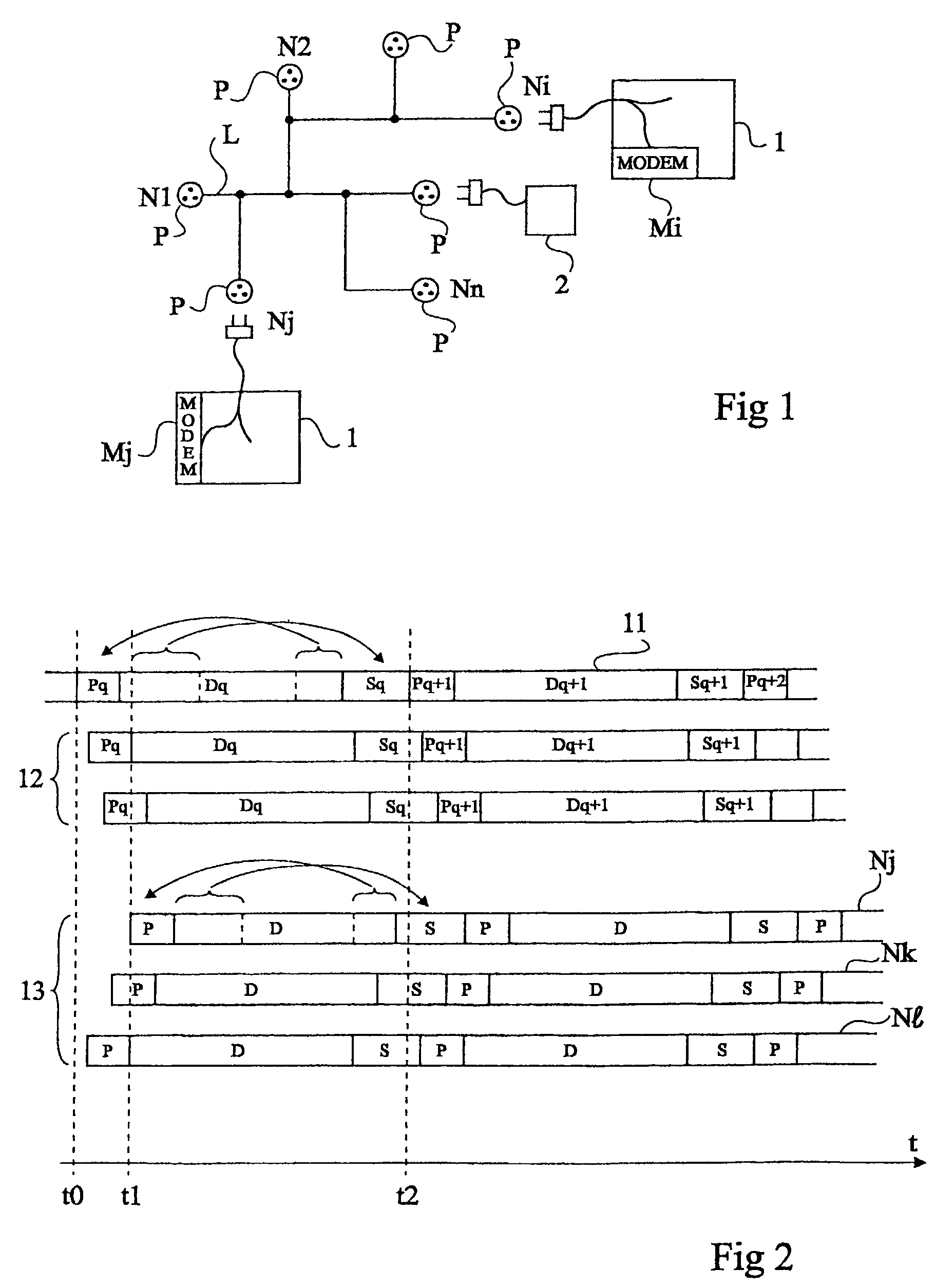Method of data transmission by orthogonal frequency-division multiplexing
a data transmission and orthogonal frequency technology, applied in frequency-division multiplexing selection, modulated carrier systems, transmission, etc., can solve the problems of reducing network capacity, flow rate limitations of the order of a few hundred kilobits per second, and the inability to efficiently code-distribution systems,
- Summary
- Abstract
- Description
- Claims
- Application Information
AI Technical Summary
Benefits of technology
Problems solved by technology
Method used
Image
Examples
Embodiment Construction
[0049]The same elements have been designated with the same references in the different drawings. For clarity, only those elements and those steps of the method which are useful to the understanding of the present invention have been shown in the drawings and will be described hereafter. In particular, the data to be transmitted and their possible coding have not been detailed. The data to be transmitted and the possible coding of these data as well as their transmission protocols depend on the applications, and the present invention may be implemented whatever these types of data and transmission protocols. Further, the access control mechanisms and other mechanisms necessary to the network operation (for example, priority management, etc.) have not been detailed. The possible adaptation of these mechanisms to implement the present invention uses well known techniques within the abilities of those skilled in the art.
[0050]According to the present invention, each node of the network ...
PUM
 Login to View More
Login to View More Abstract
Description
Claims
Application Information
 Login to View More
Login to View More - R&D
- Intellectual Property
- Life Sciences
- Materials
- Tech Scout
- Unparalleled Data Quality
- Higher Quality Content
- 60% Fewer Hallucinations
Browse by: Latest US Patents, China's latest patents, Technical Efficacy Thesaurus, Application Domain, Technology Topic, Popular Technical Reports.
© 2025 PatSnap. All rights reserved.Legal|Privacy policy|Modern Slavery Act Transparency Statement|Sitemap|About US| Contact US: help@patsnap.com



